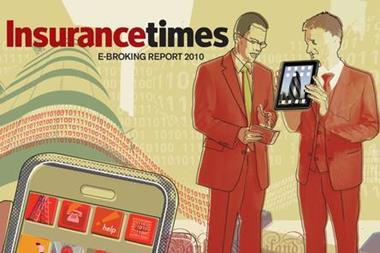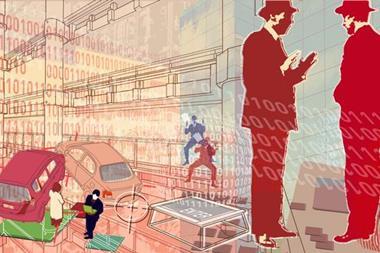Our annual Broker Service Survey shows that the most popular e-trading option is to access insurers’ own websites. But many still rely on email, fax or the telephone
The arrival of the internet brought e-trading to the insurance industry. Insurers were quick to recognise the productivity gains and the chance to deliver products and services offered by this new channel. Recognising that brokers wanted to be able to compare and contrast quotes from a range of insurers without the need to access individual websites, a group of leading insurance companies launched the e-commerce portal imarket.
Not to be left behind, brokers too understood the benefits of this new technology; underwriting agencies recognised that they could achieve productivity gains and reach new customer bases by using newly created networks to distribute schemes and other services.
Insurance Times has been monitoring the shape of this changing marketplace in its annual Broker Service Survey. Early results from this year provide some interesting insights.
The survey offered respondents a range of e-trading options and invited them to indicate how often they used these – for commercial and, separately, for personal lines. The options included: direct access to insurers’ websites, access via imarket; e-trading on broker networks such as Towergate’s PowerPlace or Brokerbility Network’s Brokerbility Information Gateway (BIG); trading through virtual underwriting agency iprism; and trading either using bespoke systems or package systems available from software houses such as Open GI, Acturis, SSP and Insurecom.
Direct access to insurers’ websites was the most popular option, with the vast majority of respondents indicating that they used this option at least some of the time (figure 1, see pdf link, right). The result is not surprising as insurers were the first to market with e-trading and have worked hard to alert brokers that products and services could be accessed through this channel. The data also indicates that more than a third of brokers rely on insurers’ websites for most or all of their e-trading.
Clearly many brokers still have neither the resources nor see the opportunity for a commercial return from investment in e-trading technology, preferring to rely on more traditional means of communicating with their insurer partners, such as email, fax or the telephone.
A hard core of respondents “never use” e-trading (figure 1); 5%-10% “never use” insurers’ websites, while as many as 40% “never use” imarket or bespoke systems. By removing the “never use” respondents from the analysis (figure 2), it is possible to see that respondents with their own bespoke systems use e-trading more often than those without; more than 50% of respondents with bespoke systems use e-trading for “all or most” transactions, compared with 40% accessing insurer sites directly and 20% relying on imarket for “all or most” transactions.
As the survey aims for a marketplace snapshot, it cannot assess e-trading volumes. However, businesses that have invested in bespoke systems have most likely designed their internal workflows so that staff are encouraged, even obliged, to use the system and use e-trading more frequently.
More than half the respondents said they e-traded using imarket, indicating a strong awareness of the e-commerce portal. In fact, these results are not a true measure of imarket’s penetration, which is far greater: it has links to virtual underwriting agency iprism and no doubt other market players too.
By slicing and dicing the survey data, it is possible to see that when network/alliance members are compared with all respondents, the network/alliance members access insurer websites directly for fewer transactions (figure 3). This makes sense, as brokers who are network members often have access to systems run by underwriting agencies that will help to satisfy most of their e-trading needs. Additionally, underwriting agencies may work with a panel of insurers, thus further reducing the need for brokers to access insurer sites directly. Examples include Towergate’s PowerPlace and Brokerbility Network’s BIG system.
These findings are only an early indication of survey results. Further analysis of these and other issues, including e-trading comparisons between commercial and personal lines, and profiles of brokers’ use of e-trading technology, will be available in the survey report. IT
If you would like to find out more about the survey, please contact lizzie.telford@insurancetimes.co.uk.
Downloads
Broker Service Survey charts pdf
PDF, Size 0.13 mb






































No comments yet